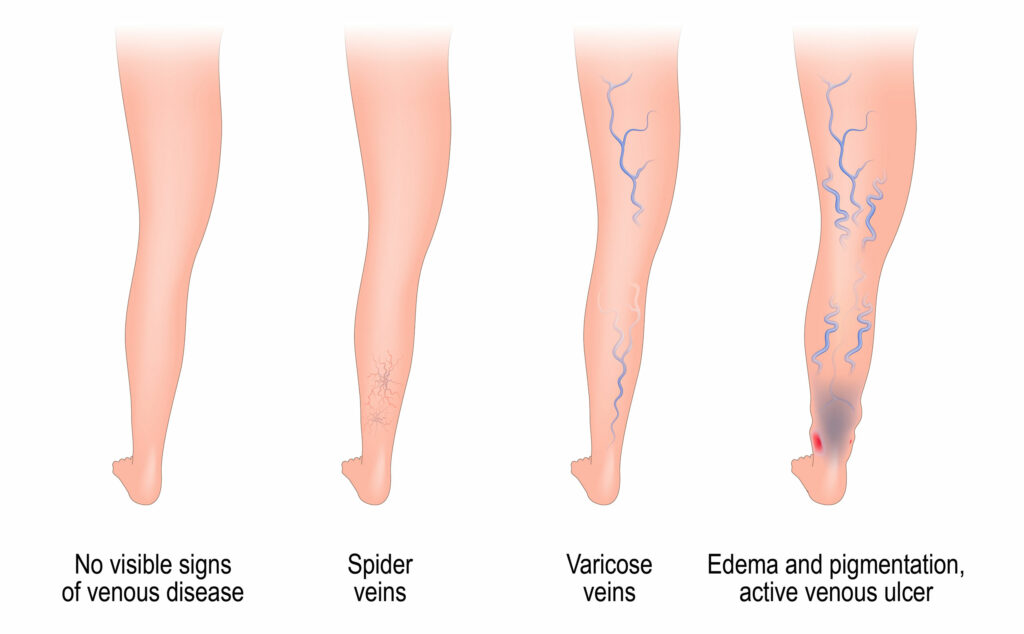Venous stasis ulcers
Chronic venous insufficiency produces blood stagnation within the veins, which produces a significant increase in the pressure that they exert on fat and skin. Constant hypertension damages the tissues causing skin thinning, hardening, and hyperpigmentation. All of the above causes a loss of skin continuity known as an ulcer.
Risk factors for venous ulcers
Ulcers are wounds that can be caused by various diseases, venous stasis (venous insufficiency) being the most common cause.
The risk factors for suffering a venous ulcer are the same as for venous insufficiency: old age, sedentary lifestyle, extended periods standing, heredity, female sex, pregnancy, obesity, and a history of venous thrombosis.
Venous ulcers causes and symptoms
Patients suffering from this disease have a poor quality of life due to the symptoms caused by ulcers. Patients usually see their self-esteem affected due to physical limitations and changes in appearance.
Venous ulcers occur mainly on the inside of the legs and ankles. Ulcers are generally superficial with irregular edges, with a background of friable tissue and yellowish discharge.
They may be infected with purulent discharge and a foul odor.
The pain can be mild to moderate.
Arterial pulses are normal unless there is an arterial disease.
Other symptoms are telangiectasias, varicose veins, swelling, brown and/or reddish coloration of the skin, desquamation, and lipodermatosclerosis (thin, stiff, and shiny skin, without fat below it).


Venous ulcers are mainly diagnosed on physical examination. When the diagnosis is uncertain or when surgery is planned, a venous Doppler ultrasound is performed, in which reflux or obstruction in the superficial, deep, or perforating veins can be identified.
The treatment of venous ulcers is complex and in most cases long.
It consists of changes in venous hygiene habits, oral or local medications directed at the ulcer, compression therapy with bandages and dressings, sclerotherapy, and surgery.
Venous hygiene habits consist of leg elevation, exercise, and skincare.
Compression therapy consists of the use of bandages, socks, or compression systems that improve blood flow towards the heart. This type of therapy is the mainstay of ulcer management.
Local medications such as antibiotics, skin regenerators, healing, etc., are useful in managing ulcers. Many times it is necessary to perform an ulcer debridement to remove dead and/or infected tissue that prevents healing.
Surgery is sometimes necessary to remove stasis or venous reflux to the legs.
At ABC Medical Center’s Cardiovascular Center, we can provide you with specialized care. Contact us!
Fuente:
Dr. Claudio Alberto Ramírez Cerda – Vascular and Endovascular Surgery specialist at ABC Medical Center.



